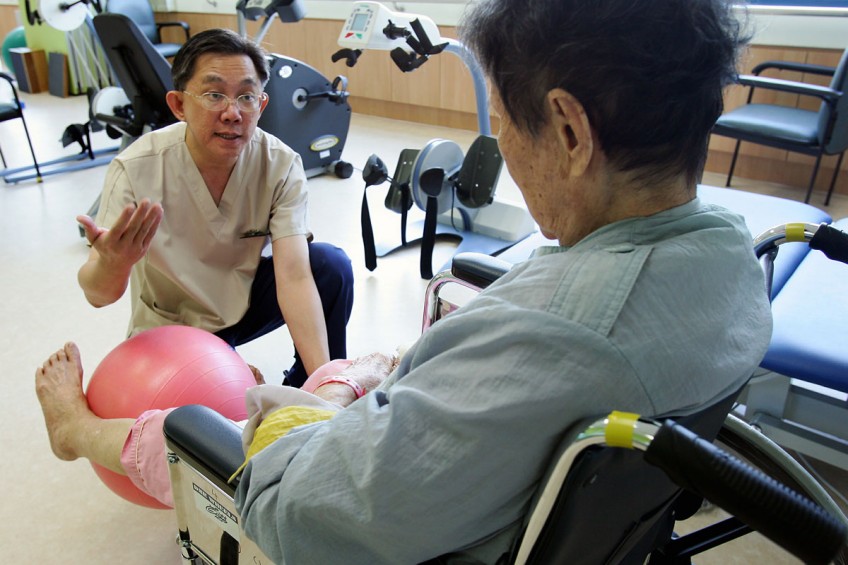How cancer rehab can help survivors


When it comes to fighting cancer, the battle may not be over even after the treatments are completed.
A breast cancer patient, for example, may experience heaviness and swelling in her right arm after having part of her right breast and lymph nodes in the armpit surgically removed.
This can make simple tasks like putting on clothes extremely challenging, said Dr Effie Chew, a senior consultant at the division of neurology (rehabilitation medicine) at National University Hospital.
For these people, cancer rehabilitation can help.
"It is similar to rehabilitation of other diseases in its multidisciplinary-team approach to addressing disabilities," she said.
"But it is also unique in that cancer and its treatment result in some unique effects on function, such as the hardening and wasting of muscles caused by radiation, or swelling of limbs due to removal of lymph nodes, or cancer-related fatigue."
A survey of 204 outpatients at the National University Cancer Institute, Singapore (NCIS) last year found that 87 per cent of cancer survivors reported a change in physical function after being diagnosed with cancer and undergoing treatment.
The most frequently reported changes were pain, weakness, difficulties in performing basic daily activities, as well as numbness.
These symptoms were greatest within the first year of diagnosis, said Dr Chew.
Some may even have to stop working due to fatigue.
Cancer rehabilitation may involve physiotherapy to help patients regain their fitness, and occupational therapy to aid them in overcoming difficulties in their daily activities.
Some may have cognitive problems that resulted from chemotherapy, said Dr Chew.
"For those with more complex needs, such as neurological, muscle or soft tissue damage, a rehabilitation physician may be needed," she said.
This is a doctor who specialises in problems of function, including physical and psychosocial function.
Also involved in helping cancer patients are nurses who specialise in cancer care, social workers and dietitians.
For instance, a patient may receive ultrasound treatment and get help with exercises from the physiotherapist to reduce pain and improve mobility. He may be enrolled in a physical training programme to build his fitness.
Meanwhile, the occupational therapist can dish out advice on how the patient could go about his daily activities to conserve energy.
Nurses can provide emotional support and link the patient up with fellow cancer survivors.
However, most cancer survivors with disabilities do not receive rehabilitation services, said Dr Chew.
"Some accept the disabilities as the normal consequence of cancer and its treatment. Others are unwilling or unable to get to the outpatient rehabilitation sessions."
In the NCIS survey, 64 per cent of cancer survivors were aware that treatment was available for their physical impairments.
But 44 per cent were unwilling to attend therapy sessions.
The main reasons cited were concerns regarding transport and the need for a caregiver to take them to these sessions, followed by cost, the survey found.
But cancer rehabilitation is "an integral part of cancer survivorship", said Dr Chew.
"Physical function impacts psychological well-being and quality of life," she said.
"Cancer rehabilitation has been shown to improve physical function and quality of life for cancer survivors, even those who are in the palliative stage of their disease."

This article was first published on November 11, 2015.
Get a copy of The Straits Times or go to straitstimes.com for more stories.